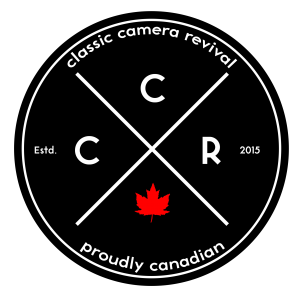In a continuation from the last episode, Bill and James are again joined by Marwan from SilverGrain Classics. In today’s episode, we’ll be talking about the cameras that disrupted Leica’s little kingdom of Rangefinders, the SLR. And the fact that despite not wanting anything to do with them, Lecia would be forced kicking and screaming into the SLR market with mixed results.
While Leica sat tall among camera manufactures when it came to rangefinders, the fact of the matter was that by the 1960s the SLR had been gaining traction among photographers both professionals and amateurs. While Leica had the capacity to built high-quality cameras, their experience with meters could be behind the times. The original Leicaflex in 1964 used a simple external CdS metering cell and lacked any sort of automation. The lack of any sort of thru-the-lens metering came as a surprise as Minolta had done that a few years earlier with the SR-7. Thankfully the second camera in the Leicaflex line, the SL marked a major leap forward in 1968. It including TTL metering, manual exposure, and remained heavy and over-engineered. The one thing it did include is a shutter with a top speed of 1/2000″ something big for the day as most cameras topped out at 1/1000″. Further refinements and improvements of the meter came with the SL2 in 1973. The trouble was that these cameras were made to the same exacting standards as the M-Series of cameras and were over-engineered and cost a lot of money.

As we mentioned in the previous episode the 1970s weren’t the best for Leica on the financial front and their partnership with Copal and Minolta produced far more than just the Leica CL. Not only did the partnership include the production of the Leitz-Copal shutter it also allowed for the sharing of technology, namely electronics. Japanese electronics of the 1970s far outshone that produced in Europe at the time and when Leica released the R3 in 1976 their SLRs jumped forward in a major way. The R3 and its cousin the Minolta XE were based on the framework of the Minolta XM (XK or X-1) and included improved metering and semi-automatic aperture priority exposure and manual match-needle metering. While the two cameras might look the same from the forty-year line they are not just rebranded. Some elements were shared such as electronic components and the shutter, but the two cameras were produced independently of each other. The R3 proved a successful camera for Leica. In 1980 the Leica R4 offered further refinements including full auto-exposure as well as aperture and shutter priority and full manual mode. The Minolta cousin of the R4 is the equally excellent XD. Leica also produced two lower-spec R4 models, the R4s that did not include Auto-Exposure functions. In 1986 the R5 added TTL flash metering and a minor update to the R4. In 1987 Leica returned to a more mechanical base with the R6 but maintained a battery-operated TTL meter, full auto-exposure along with semi-automatic and manual modes. In 1991 and an electronic version of the R6, the R7 came out and proved a major update with completely new electronic internals and improved weather sealing.

In 1996 Leica cut off all remaining ties it had with Leica and produced a complete redesign and new body style in the R8 and in 2002 the followup R9. The trouble with these later cameras is that there are no spare parts or tooling to repair them if they break. Both were produced in an era where no one could foresee the resurgence of film in the photographic world. Now the one thing that does stand out with Leica SLRs is the R-Mount, it had changed since its introduction in 1964. The first lenses only had a single cam or 1-Cam, that simply communicated the F-Stop position to the camera body, the SL and SL2 took the 2-Cam version which allowed for TTL metering. By the R3 and all subsequent models used the 3-Cam lenses that allowed for all the semi-automatic and automatic exposure functions. Even newer lenses included electronic contacts are ROM lenses. When it comes to investing in a Leica SLR, like any Leica it’s important to budget in some extra cash for an overhaul or tune-up. And when it comes to repairing the best ones to stick to are the R3 to R7 there are still plenty of spare parts. One thing to look out for is early model R4 cameras they included a chip that often died or is already dead. Marwan is quick to recommend the R5 with a 28mm lens and a Zoom lens, which can be had for an inexpensive price tag. Of course, if the cost of the lenses put you off, try Tameron Adapt-All lenses that will even work with the AE functions.s
Want a subscription to SilverGrain Classics and are a fan of Classic Camera Revival? Visit their shop online and buy a magazine or a subscription? Looking for a good spot to get your gear and material fix check out Burlington Camera (Burlington, ON), Downtown Camera (Toronto, ON), Film Plus (Toronto, ON), Belle Arte Camera (Hamilton, ON), Pond’s FotoSource (Guleph, ON), Foto Art Camera (Owen Sound, ON). Out West there’s The Camera Store (Calgary, AB) and Beau Photo Supply (Vancouver, BC). Additionally you can order online at Argentix (Quebec), buyfilm.ca (Ontario), the Film Photography Project or Freestyle Photographic. Looking for development options, check out these labs that have our support, Boréalis Photo Lab, Old School Photo Lab, The Darkroom, and Film Rescue International.
Also you can connect with us through email: classiccamerarevivial[at]gmail[dot]com or by Facebook, we’re at Classic Camera Revival, Twitter @ccamerarevival, and Instagram (@classiccamerarevival)!

